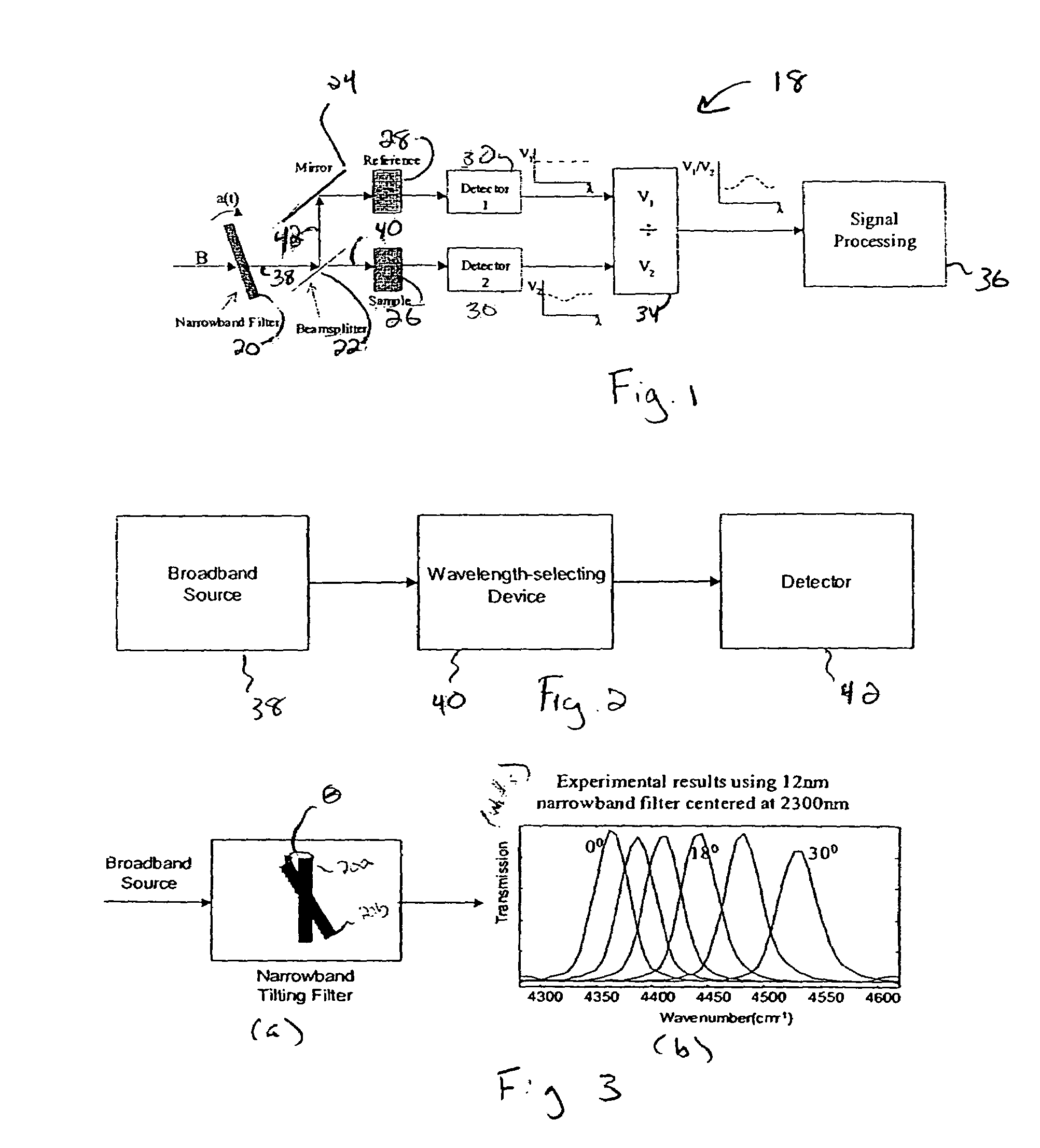Spectroscopic systems and methods
a spectroscopic system and system technology, applied in the field of spectroscopic systems, can solve the problems of significant delay, slow measurement, and limit the rotation speed of moving parts,
- Summary
- Abstract
- Description
- Claims
- Application Information
AI Technical Summary
Benefits of technology
Problems solved by technology
Method used
Image
Examples
example
[0072]One can construct embodiments of the present invention according to FIGS. 1, 4 and 5 using the following components. One can use a 250W tungsten-halogen source such as model #LSH-T250 available from Jobin Yvon, Inc. of New Jersey, USA, as a broadband source (not shown in FIG. 1). One can use a narrow-band transmitting filter such as model #F12-2300-3 available from CVI Laser Corp. of New Mexico, USA as an interference filter portion of the CSWS device 20. One can use a BK7 glass (90% transmitted for the main sample, and 10% reflected for the reference sample), available from most optical component distributors and / or manufacturers such as CVI Laser Corp. of New Mexico, USA, as the beamsplitter 22. One can use a brush motor with integrated position encoder such as model #8324S005 available from Pittman of Pennsylvania, USA as the servo motor 44. One can use a 12A 80V brush motor amplifier such as model #12A8K available from Advanced Motion Controls of California, USA as the mot...
PUM
| Property | Measurement | Unit |
|---|---|---|
| angle of incidence | aaaaa | aaaaa |
| angle | aaaaa | aaaaa |
| solid angle | aaaaa | aaaaa |
Abstract
Description
Claims
Application Information
 Login to View More
Login to View More - R&D
- Intellectual Property
- Life Sciences
- Materials
- Tech Scout
- Unparalleled Data Quality
- Higher Quality Content
- 60% Fewer Hallucinations
Browse by: Latest US Patents, China's latest patents, Technical Efficacy Thesaurus, Application Domain, Technology Topic, Popular Technical Reports.
© 2025 PatSnap. All rights reserved.Legal|Privacy policy|Modern Slavery Act Transparency Statement|Sitemap|About US| Contact US: help@patsnap.com



